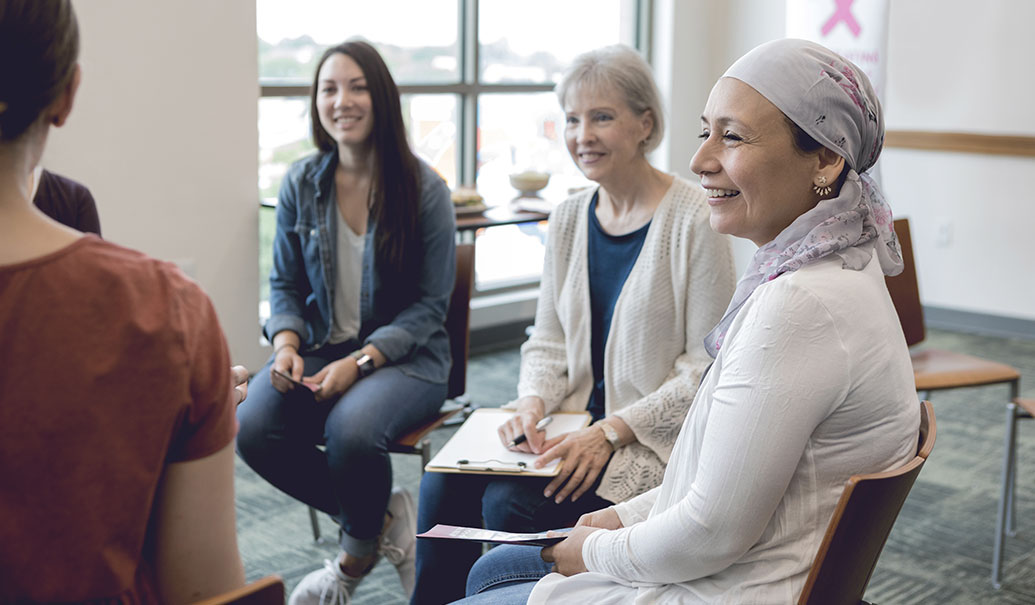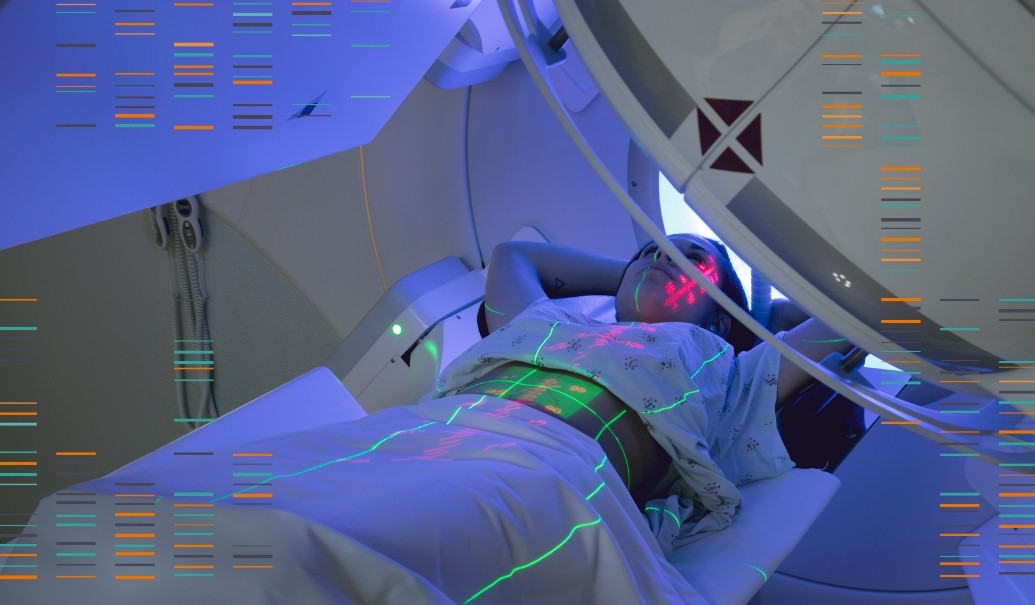Cancer is a life-changing diagnosis that permeates every facet of a person’s life. So it should come as no surprise that patients and their families often respond to a diagnosis by becoming deeply engaged in the decisions about their care and treatment.
Historically, pharma has tended to focus the lion’s share of its commercial efforts on oncologists rather than patients themselves, citing a belief that the patient’s role in treatment decisions is limited given the complexity of these options. Candidly, cancer care delivery in the not-so-distant past was decidedly paternalistic and patients often deferred almost completely to their oncologists.
In stark contrast, the present era’s abundance of accessible online resources and patient advocacy communities means that patients are increasingly empowered to plant themselves in the driver’s seat throughout their journey. They view their medical team as their “GPS system,” guiding them with direction and expertise.
“At the cancer center I go to I don’t think there are groups anymore. I wish there was a metastatic support group. I don’t want to frighten the newbies who were just diagnosed.”
A breast cancer patient
How we identified the five elements of empowered cancer care
To better understand this shift in patient empowerment and define where pharma fits within this new paradigm, ZS commissioned a series of virtual empathy and co-creation sessions with 30 respondents, including 20 breast cancer and chronic lymphocytic leukemia (CLL) patients and caregivers, along with nine nurses and oncologists. We subsequently fielded a follow-up quantitative survey with 100 oncology patients—across breast cancer, CLL, lung cancer, acute myeloid leukemia, multiple myeloma and colorectal cancer—to validate our findings in patients representing a wide range of experiences and backgrounds.
Our research aimed to define the qualities of patient-centered care and propose solutions when there are opportunities to empower patients and caregivers—and ultimately improve experiences and outcomes. Based on the responses from the virtual co-creation sessions, ZS identified five key enablers, which pharma can maximize to build a better patient experience. Those qualities—as identified by patients—include trust, transparency, autonomy, simplicity and connection.
FIGURE 1: Attributes of patient-centered care
These elements may seem obvious, yet our research reinforced that patients are not necessarily experiencing these attributes during their care. This reflects a growing need for pharma companies to reconsider their strategies around patient interactions to better align with patient needs. Through authentic dialogue with patients, ZS also discovered that many of the notions pharma holds about patient attitudes and behaviors are actually antiquated myths. To be successful in the oncology space, pharma must understand what has changed and prepare for the new realities.
New reality #1: Patients exercise significant, growing influence on treatment decisions
For many years the common wisdom about cancer patients—a view held by healthcare professionals and even patients themselves—was that patients are not active decision makers. As a result, pharma has concentrated its outreach efforts on oncologists. The patients and healthcare professionals (HCPs) who took part in our research study threw cold water on that thinking. These days, patients who receive a cancer diagnosis routinely seek out second and third opinions, even when they’ve been seeing an oncologist for several months. In fact, nearly 50% of patients surveyed sought opinions from more than one oncologist before initiating their first treatment, and 35% of those who sought second opinions ultimately switched doctors.
As patients experience treatment failures or disease progression, they continue to actively seek second and third opinions. Nearly 30% of patients surveyed sought opinions from more than one oncologist during later lines of treatment, with 21% of them ultimately switching doctors. This data highlights the decisive role that patients play in their own care. While oncologists undoubtedly are the gatekeepers of clinical knowledge, patients actively seek out doctors who they trust, personally connect with and who provide them with transparency around treatment options.
Our research also revealed that oncologists often encourage and support their patients in seeking second opinions. They recognize patients’ anxiety and understand that patients need time to process and trust recommendations.
“Patients feel more comfortable when they hear the plan from more than one physician guiding their treatment,” said one oncologist who works with breast cancer patients. “They’re very nervous—it’s a shock especially for those who are healthy with no family history. They need to accept what they are being recommended.”
But even when a treatment plan is working, patients are increasingly willing to leave a doctor who’s unable to connect on a personal level or who is dismissive of their patients’ coping strategies.
One patient explained how an unempathetic exchange inspired them to make a change mid-treatment. “When I mentioned that I found the CLL Society to my first oncologist, she started berating me and belittling the group. I explained I received more info from them than from her in the six months I’d been with her. She left the room. I fired her, contacted my primary care physician and the insurance company and demanded a second opinion.”
This sentiment is widely shared across patients. Eighty-five percent of patients surveyed believe that physician qualities such as openness, honesty and credibility are the most important characteristics to earn trust.
What this means for pharma. Pharma companies that invest in patient activation and support can help fill the trust gap between patients and doctors and help build transparency and comfort into the treatment process. When patients feel well-informed about their diagnosis and treatment options, they are more likely to report positive experiences. Seventy-six percent of patients surveyed strongly believe that knowing about their condition is one of the most efficient ways to boost their mental and emotional well-being.
What’s more, direct-to-consumer (DTC) advertising, which was once seen as impractical in oncology, has proven successful. When Bristol-Myers Squibb launched a DTC campaign for Opdivo in 2017, sales rose 31% to $4.9 billion. And when Merck launched a DTC campaign for Keytruda, sales rose 172% to $3.8 billion that same year.
Consistent with these results, oncologists are reporting that patients are increasingly more likely to do their own research and ask for specific treatments. “Patients are starting to request more medications specifically, like something they saw in a flyer or patient forum where people are talking about a drug, and then they go look it up at the company website,” one oncologist told us.
New reality #2: Patients need proactive, transparent and ongoing support to ensure successful onboarding and adherence
Cancer treatments can come with severe, often debilitating side effects that can make patients feel even worse than the illness they’re treating. When patients document and report symptoms to their provider and have them properly managed, they are more likely to stay on a treatment and experience improvements in their condition. A study at Memorial Sloan Kettering demonstrated that patients who used a web-based tool to monitor symptoms during outpatient chemotherapy improved their overall survival by five months.
This stands in contrast to the thinking of some pharma companies that reflects a “We’ve got a great molecule with demonstrable efficacy and that’s all that really matters” mindset. Our research has shown that the patient-care team dynamic is often the single greatest determinant of the patient experience. If the “molecule first” thinking lingers and patients continue to have poor experiences with their treatment, they may switch to other treatments when they don’t need to.
Patients want to know what to expect before and during their treatment. This includes proactive and transparent discussion about side effects they may experience and what they can and should do to prevent or manage them. They also want an accessible care team to address their physical and emotional needs through their treatment. When patients don’t fully understand their diagnosis or treatment experience they will seek answers elsewhere, including from support groups, family and the internet. Unfortunately, not all of these sources offer scientifically accurate information, much to the frustration of oncologists.
What this means for pharma. Pharma can help address this challenge by continuing to invest in the kinds of information that patients need and trust during their care journey. This can include testimonies and tips from previous patients presented in a visual format to help increase a patient’s comfort with their treatment plan. Hearing another person’s experience can make them feel less alone. Pharma can also help improve the logjam of patient phone calls and portal messages to care teams by making dedicated professionals available to answer questions and provide support.
New Reality #3: Digital solutions must be complemented with high-touch, personal solutions to address unmet patient needs
Digital solutions, whether symptom and side effect trackers, second opinion finders or tools to help simplify paperwork, enhance the patient experience and contribute to the five key enablers of patient empowerment. But they can’t replace the empathy and primary support provided by live interaction with members of the patient’s care team. The “we can build an app for that” instinct has contributed to a sea of resources that do not provide value to the patient and often result in information overload and decision paralysis. What’s more, many of the apps built by pharma so far are experiencing limited downloads and use.
As ZS’s research found, patients want to feel close to their oncologists and medical care team. Seventy-one percent of patients surveyed strongly agree that emotional support provided by their medical team is essential. They crave connection with others on their treatment journey—whether from members of their care team, their family or patients on similar treatment paths.
“When I was first diagnosed, there was a support group at the cancer center, and it covered every possible topic from sex to what happens now that treatment is over. At the cancer center I go to now, I don’t think there are groups anymore. I wish there was a metastatic support group. I don’t want to frighten the newbies who were just diagnosed,” a breast cancer patient told ZS.
Many patients have reported feeling disconnected from their care team—physicians don’t often take phone calls and leave patient support tasks to nurses. Likewise, nurses in oncology practices are often overwhelmed by administrative work, such as processing prior authorizations, which keeps them away from patients.
What this means for pharma. Instead of inundating patients and caregivers with brand-specific apps, pharma can step in by assisting provider teams and patients with a more thoughtful, targeted approach to technology and by working side-by-side with patients to understand which support services they want from a digital solution versus from a person.
Patients are clear in telling us that they want support programs that mix digital and in-person support. Options could include offering liaison programs that make knowledgeable professionals and mentors available to patients who need to talk. Additionally, providing a resource patients can turn to for dedicated, judgment-free support can be a huge relief for those who don’t want to burden their families and friends. To address the spiritual and emotional needs of cancer patients, pharma can play a role in developing staff for counseling, meditation and coping skills and foster communities where no patient is left behind.
Patients may not be aware of support groups that exist outside of their local hospital or area. This is a missed opportunity. Now that most individuals are comfortable using virtual meeting tools to connect, pharma and healthcare should be doing more to help connect patients with the support groups across the world that are the best fit for where they are in their personal treatment journeys.
Patients seek to connect with those who can understand them beyond their status as “patient.” When there is support that aligns with a patient’s emotional and spiritual needs, it can be more impactful and create trust with the partner who provides these resources.
Ignore the myths and acknowledge patients’ ever-growing treatment role
Patients don’t want to be in the back seat during their journey. They want their voices to be heard and considered during treatment decisions. They feel more in control when they understand their disease, treatment options and expected outcomes. As long as pharma meets the opportunity to see beyond these dated myths, they are poised to play a vital role in working with providers and patients to provide resources that empower patients and their families, and ultimately deliver improved experiences and outcomes.
Add insights to your inbox
We’ll send you content you’ll want to read – and put to use.














